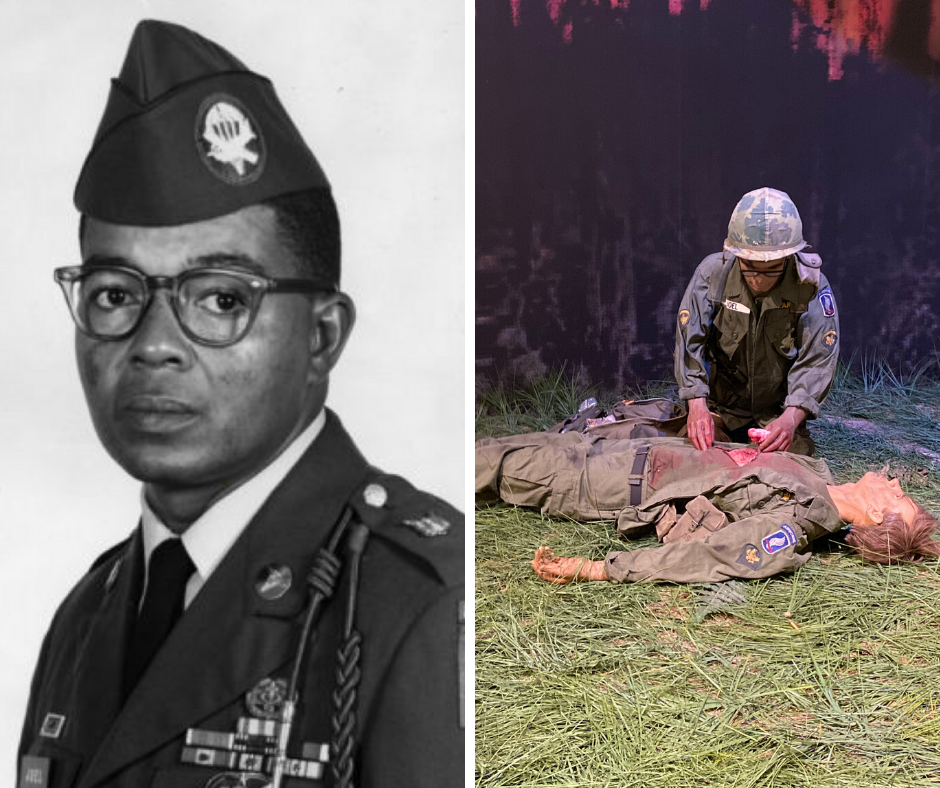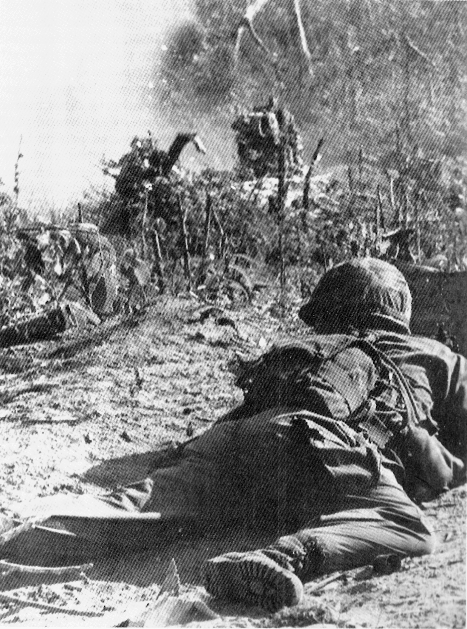Operation HUMP
Operation HUMP was a search and destroy operation initiated by United States and Australian forces on November 5th, 1965, during the Vietnam War. Involving the U.S. 1st Battalion, 503rd Infantry Regiment , 173rd Airborne Brigade, and the 1st Battalion, Royal Australian Regiment, Operation HUMP gained its name because it represented the halfway mark of the 12-month tour of duty for individuals, and thus the paratroopers were crossing over the hump to the downhill side of their tour. While there had been some sharp encounters with the Vietcong during those first six months, the contacts were typically brief interactions that ended with the enemy retreating. Operation HUMP changed all of that for the 173rd and the U.S. Army!
The Battle
The U.S.-Australian objective was to drive out the Vietcong who had taken up positions on several key hills in War Zone D, an area about 17.5 miles north of Bien Hoa. The U.S. 1st Battalion, 503rd Infantry Regiment, 173rd Airborne Brigade conducted a helicopter assault on a landing zone northwest of the Dong Nai River and Song Be River. The 1st Battalion, Royal Australian Regiment was deployed south of the Dong Nai.
On the 8th of November, 1965, within hours of beginning their move towards Hill 65, a key objective, 1st Battalion’s C Company was ambushed by a massive force of Vietcong dug in on the side of the hill. Taking heavy fire from Vietcong fighters, B Company began making its way towards C Company with the hope of relieving the Soldiers. The fighting was so close at times that B Company infantrymen often found themselves fixing their bayonets to deal with surprise attacks.
Throughout the battle, B Company called in a number of highly successful artillery strikes that forced away the Vietcong fighters temporarily. Instead of retreating, the Vietcong commander ordered his troops to outflank the American Soldiers, which was in the process of recovering its fallen and preparing itself for a prolonged battle. By doing this, he theorized that the American units would be unable to call in more artillery strikes, giving the Vietcong an advantage.
However, even in the midst of the fierce battle with soldiers having to engage in hand-to-hand combat at times, the men of the 503rd held their ground and successfully repelled the Vietcong- eventually taking Hill 65. A full evacuation took place the following morning, on the 9th. Even with the American victory, the battle still took its toll on the 503rd, with 49 Soldiers killed in action, and even more wounded. The Australian/New Zealander detachment also sustained two fatal casualties of its own. Overall, Operation HUMP proved to be one of the deadliest days in the 173rd’s long and storied history.
The Story Of Specialist Fifth Class Lawrence Joel
Winston-Salem native, Specialist Fifth Class Lawrence Joel of the 1st Battalion (Airborne), 503d Infantry, 173d Airborne Brigade, fought during Operation HUMP. Despite being shot in the leg, Joel continued to treat his fellow Paratroopers and search for the wounded. After being hit in the thigh by a second bullet, Joel maneuvered himself through heavy enemy fire to treat 13 additional soldiers. Throughout the 24 hour battle, Joel continued to comfort and treat the wounded until he was evacuated. On March 9, 1967 President Lyndon B. Johnson awarded Joel the Congressional Medal of Honor on the White House lawn. Johnson stated that Joel exhibited “a very special kind of courage- the unarmed heroism of compassion and service to others.” He was the first medic to earn the Medal of Honor during the Vietnam War, and the first living African American to receive this medal since the Spanish–American War in 1898. As a tribute to his lasting legacy, his hometown of Winston-Salem named a coliseum after him known as the Lawrence Joel Veterans Memorial Coliseum. Pictured below is an image of Specialist Fifth Class Lawrence Joel, alongside a picture of an exhibit showcased at the U.S. Army Airborne & Special Operations Museum depicting Joel’s heroic actions.

Did you enjoy this content? If so, please consider giving a donation to the U.S. Army Airborne and Special Operations Museum so we can continue educating the public regarding the histories of Airborne and Special Operations Soldiers.




